Frank Baensch: Larva
Most marine fish, and invertebrates, have a complex life cycle that involves a dispersing, planktonic larval stage - the time from egg hatching to juvenile development. These fish generally produce high numbers of eggs with larvae that develop in the open ocean for long periods (weeks to months). Fish larvae are fascinating animals. They are rarely seen underwater, enormously diverse in their developmental patterns, and physiological, morphologically, behaviorally and ecologically different from adult fishes. Upon hatching, most are microscopic (2-4 mm) and undeveloped, living off yolk, and incapable of feeding and swimming against currents. They learn to swim, hunt and avoid predators as they mature through various stages. Many species are odd looking and have temporary specializations to survive in the pelagic environment; such as freakishly large fins, head or eyes, intricate and/or elongated spines, body armor, and/or various pigment patterns. When larva are close to transitioning into juveniles they typically use the sun, currents and reef sounds and smells to find their new home. Their final approach is made at night because the reef has many larval predators. Divers sometimes interrupt a fish larva at settlement however, they are generally rarely encountered. In fact, less than 10 percent of fish larvae have been described, much less photographed. Fish larvae are important in many aspects of aquaculture, fisheries conservation, biology and evolution.
I am a fish culturist and marine biologist and study fish larvae for my work. I also love to photograph them because they have a natural beauty that is rarely presented. The following images show late stage larvae and early juveniles (including some invertebrates) at settlement. The subjects were collected on the surface at night off a boat in Papua New Guinea, photographed in a small fish tank, and released. FInd more larval images and information on my research at Blue Reef Photo.
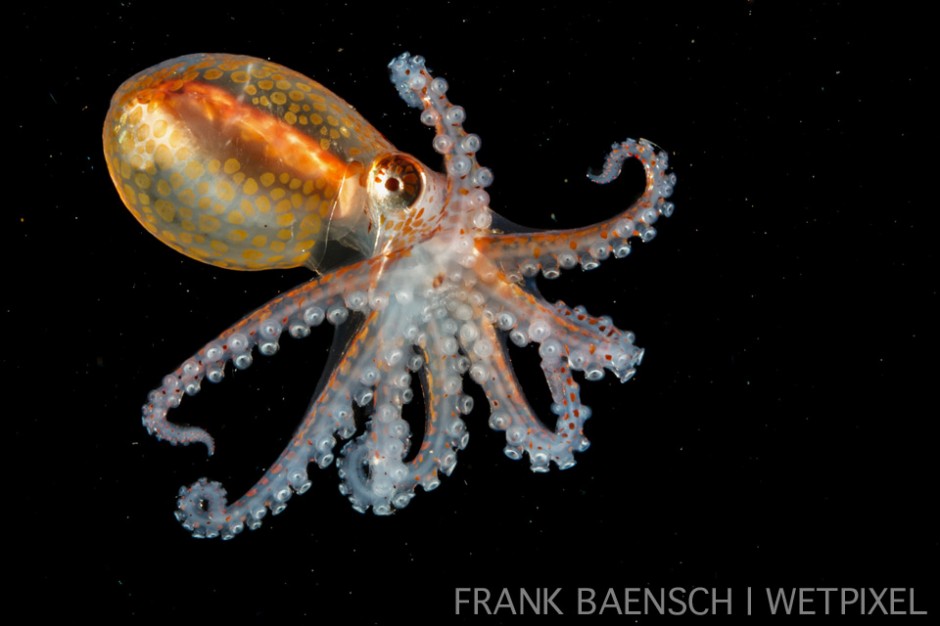
Octopus larva. 9.5 mm TL. We had hundreds of octopus larvae settle on anchor rope.
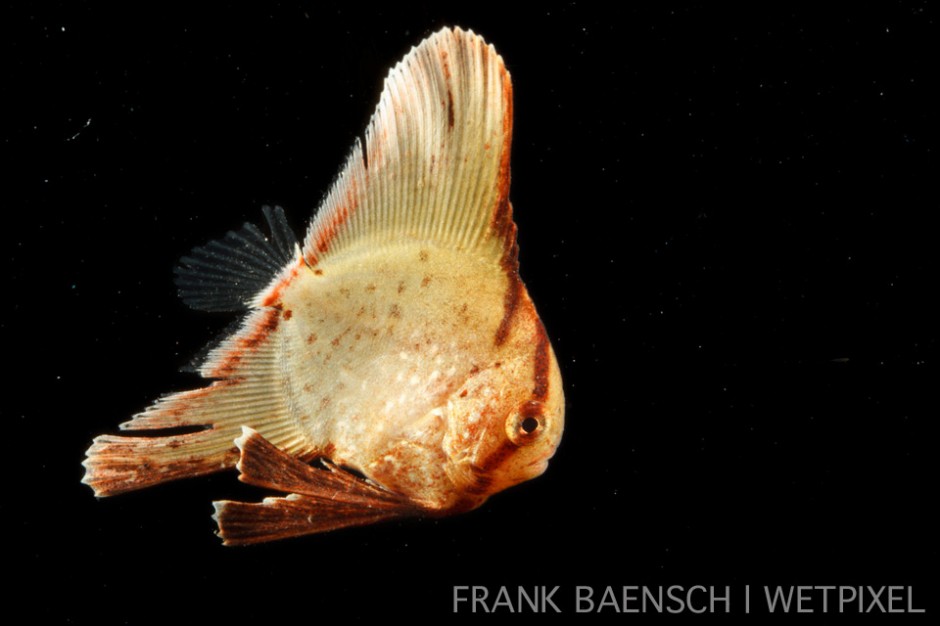
Batfish juvenile. 14.8 mm TL. This little beauty was found hiding in seaweed. Only one individual encountered.
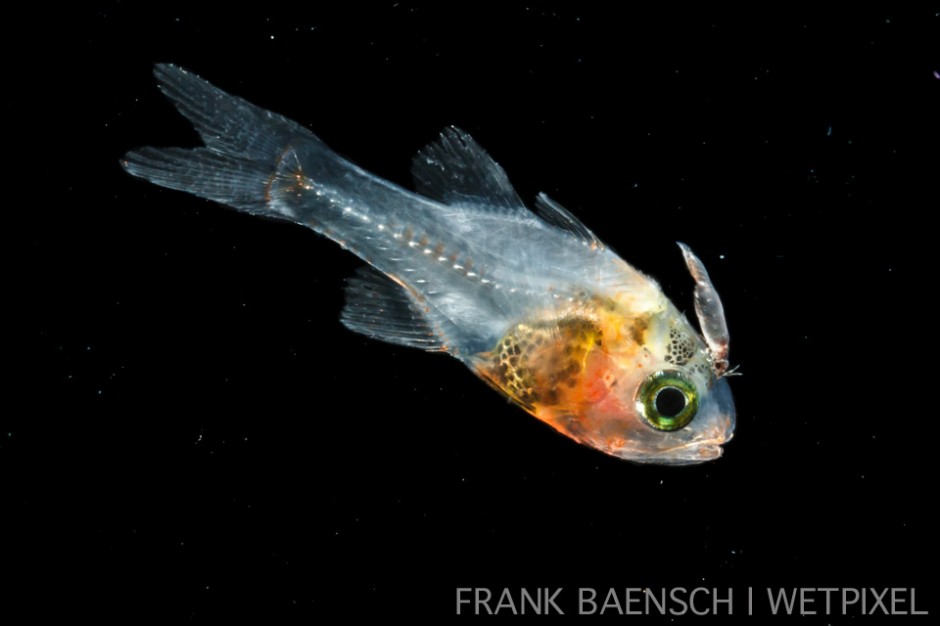
Cardinalfish larva with parasitic isopod. 16.4 mm TL. It's amazing how early fish are subjected to parasites!
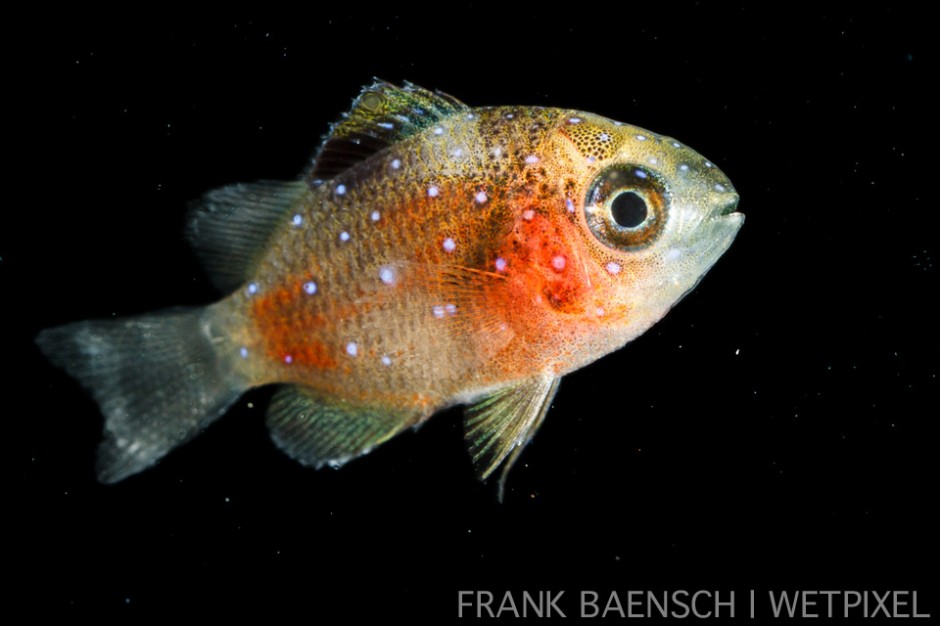
Damselfish larva metamorphosing into a juvenile. 12.2 mm TL. Very common.
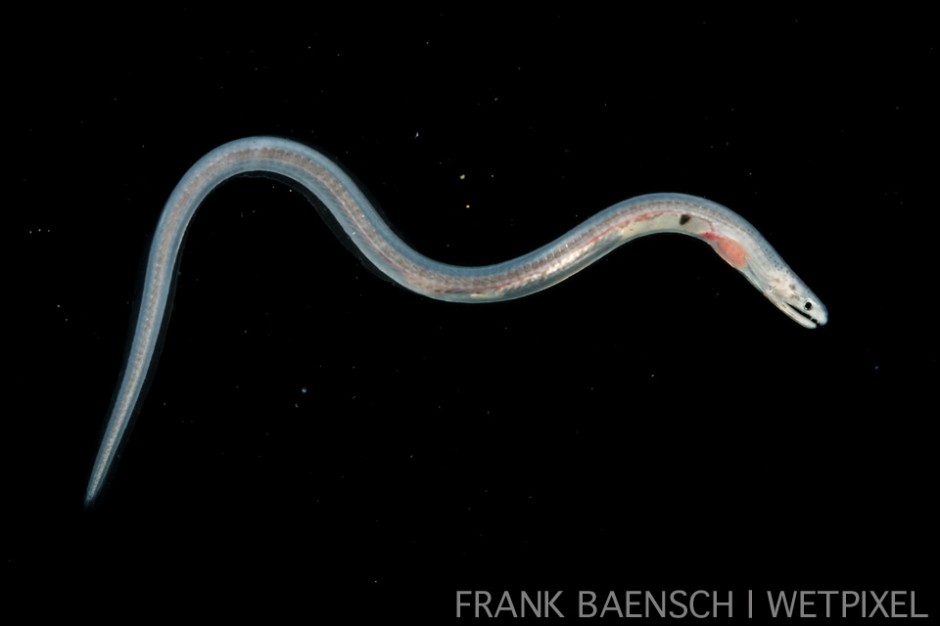
Eel post larva at 44 mm TL. Probably a garden eel. Rare.
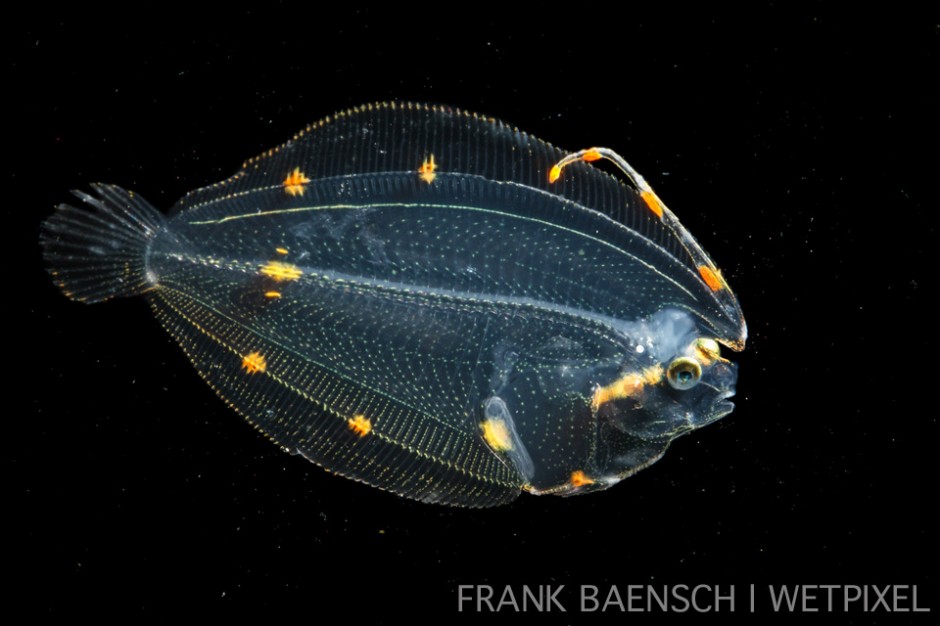
Lefteye flounder post larva. 34.2 mm TL. The elongated dorsal fin ray is a specialization to pelagic life and is retained in adults of some species.
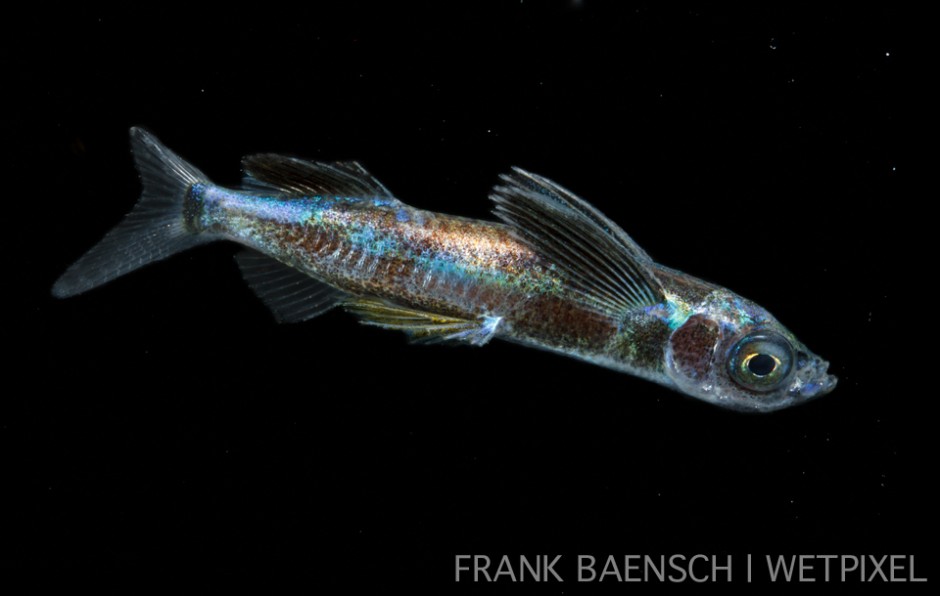
Flyingfish larva. 24 mm TL (total length). Rare. Only two individuals encountered. Flyingfish remain pelagic throughout their life cycle
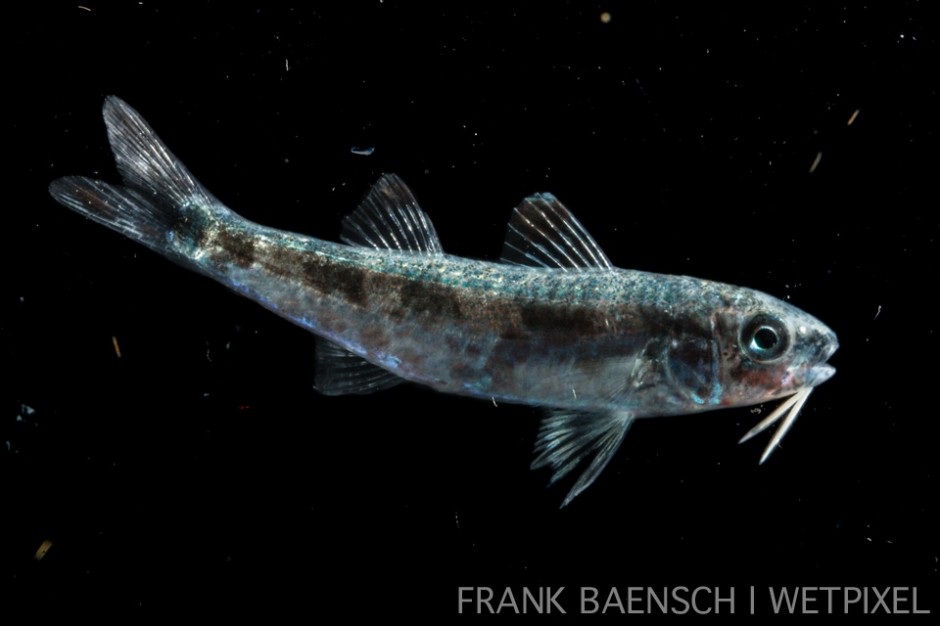
Goatfish larva. 53 mm TL. Goatfish have very long larval stages in excess of 100 days.
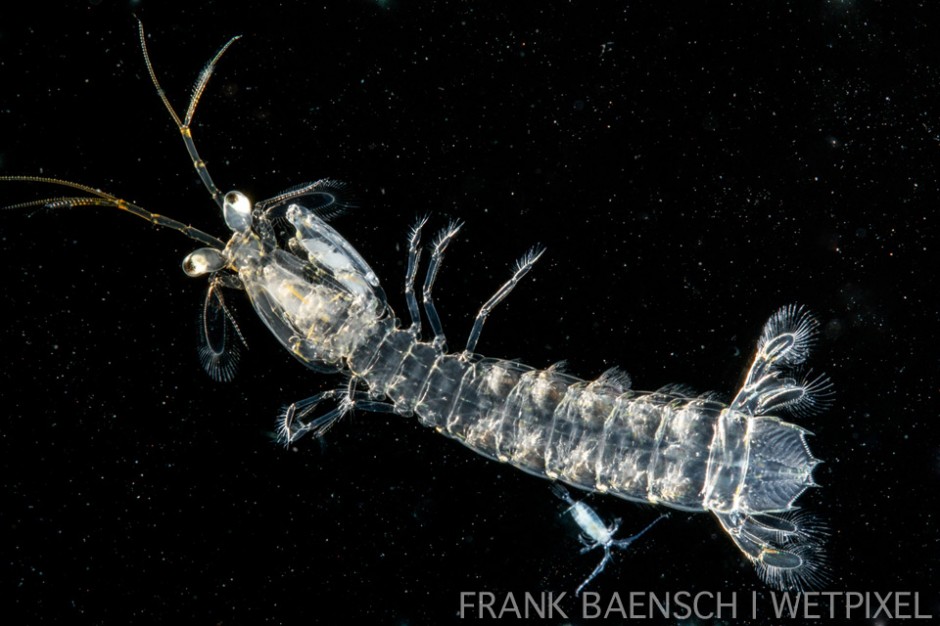
Mantis shrimp larva. 65.0 mm TL. The little critter at the bottom is an adult copepod.
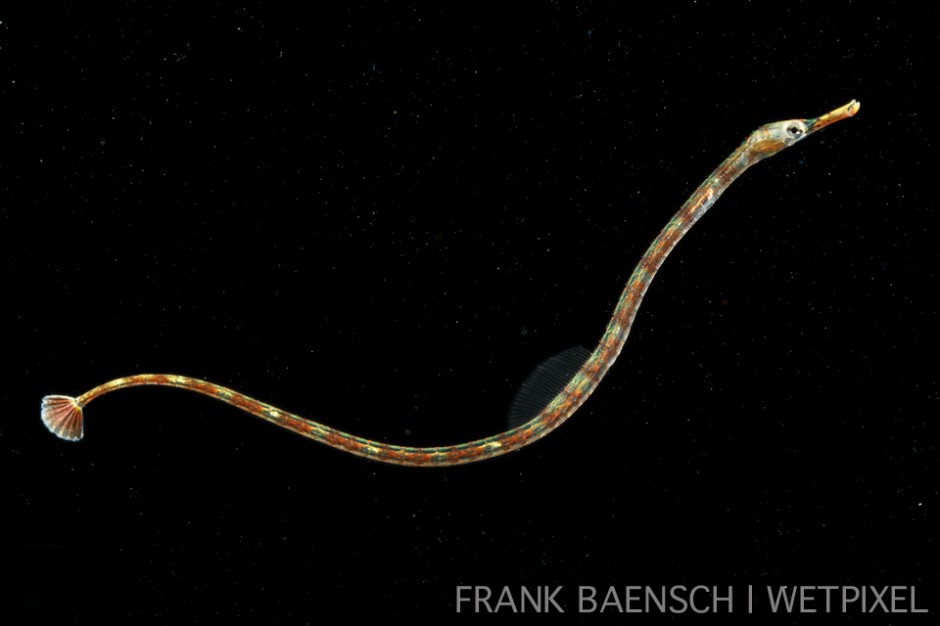
Pipefish juvenile. 52.4 mm TL. Rare.
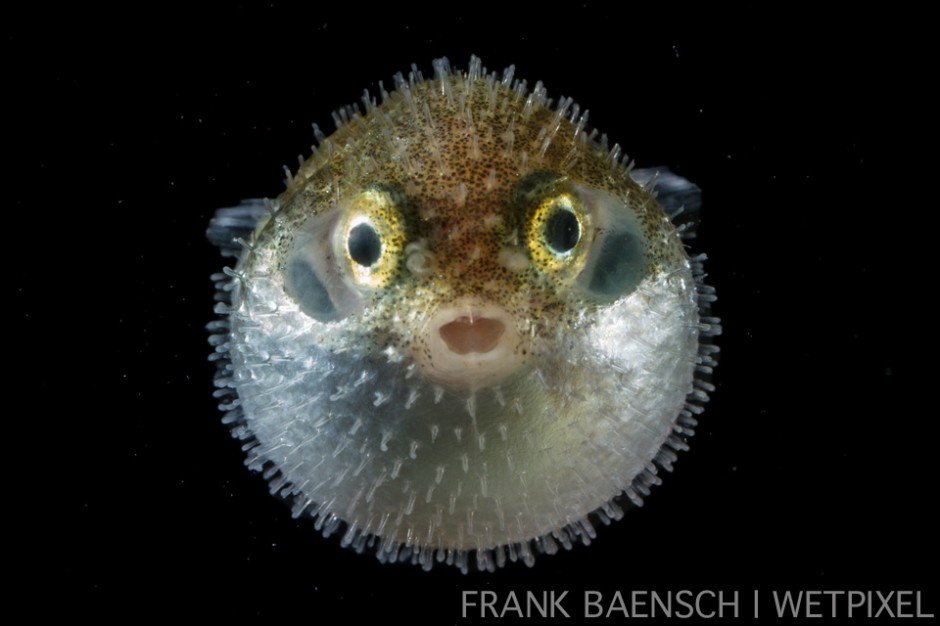
Pufferfish larva. 12.3 mm TL. This guy was ticked off but made it back to the ocean without incident.
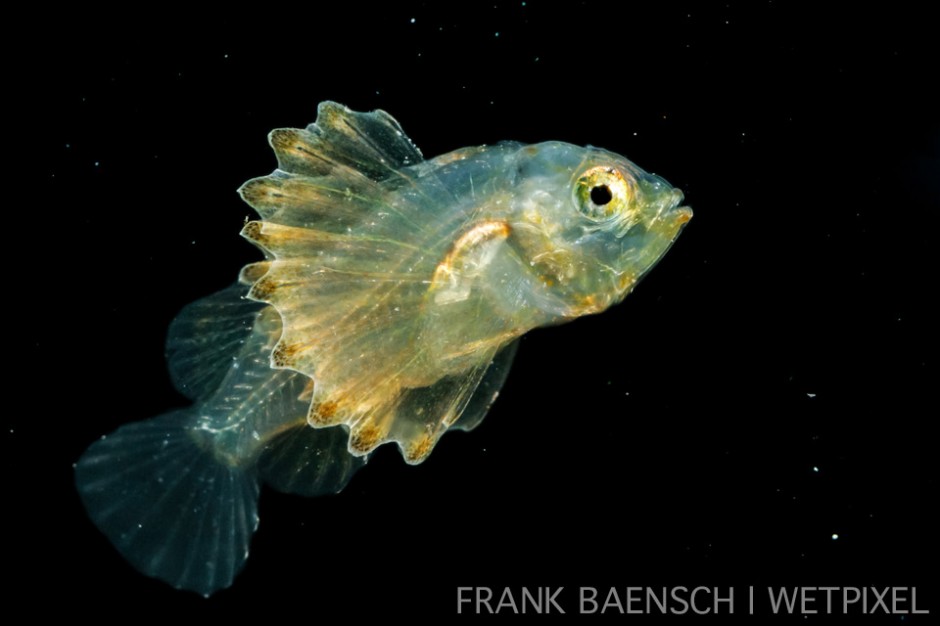
Scorpionfish - 16.3 mm TL
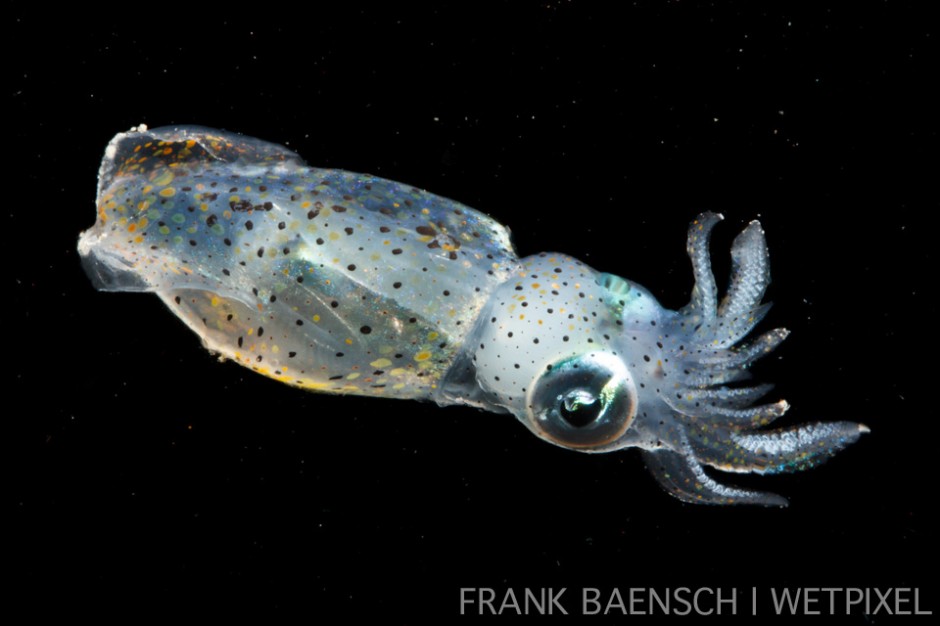
Baby squid at 12.6 mm TL. These were very common.
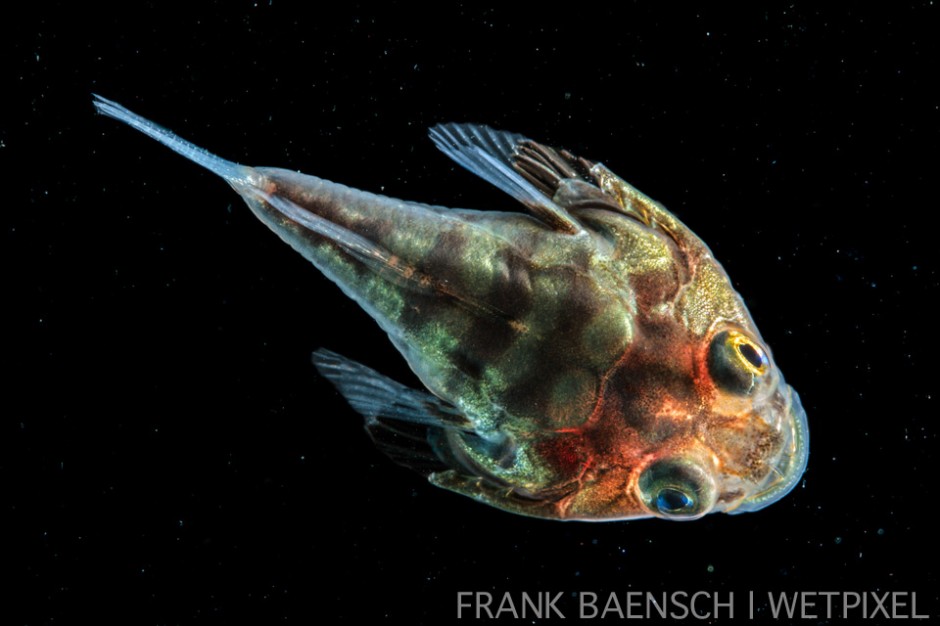
Stargazer late stage larva. 29 mm TL. Rare. Only two individuals encountered.
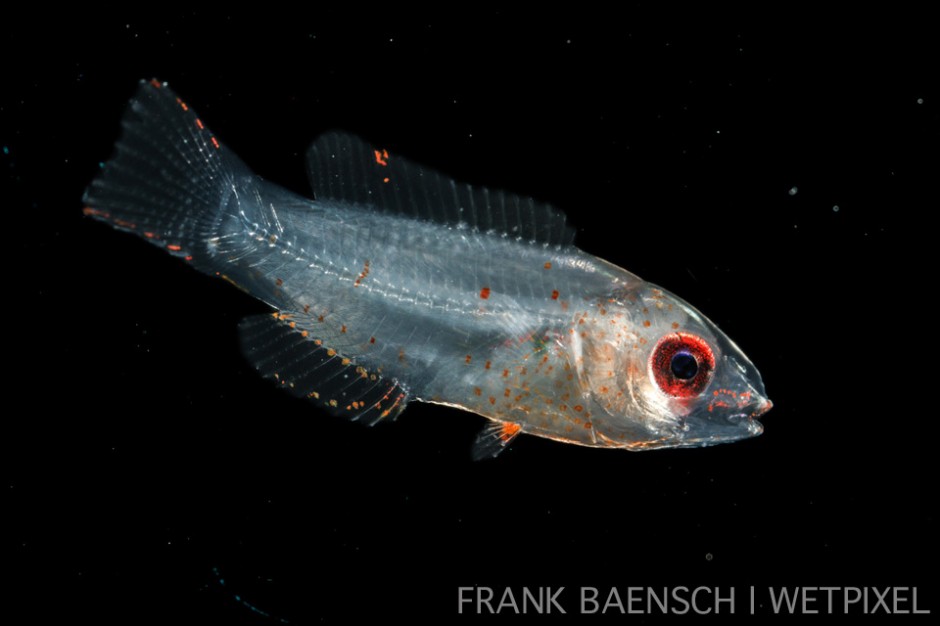
Wrasse larva. 11.8 mm TL. Wrasse larvae typically burry in sand when they settle.